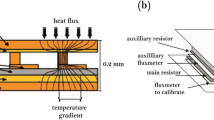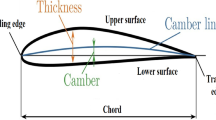Abstract
This paper aims to numerically study the effects of surface texturing on reducing the power loss and lift increasing in lightweight crankshaft bearings. A computer program was developed to study the behavior of a dynamically loaded engine crankshaft bearing taking into account roughness effects and surface texturing using dimples. We compare results using the Patir and Cheng modified Reynolds equation and the so-called \(p-\theta \) model proposed by Elrod and Adams. In addition, the JFO mass-conserving model is considered to deal with cavitation. The finite difference method is used to approximate the Patir–Cheng Reynolds equation. Simulations were performed for the main bearing of the lightweight crankshaft, considering different surface texture designs in terms of location, depth and radius of dimples. Some texture designs lower the hydrodynamic fluid pressure peaks by 4.8%, consequently providing additional lift. Lastly, a comparison between the lightweight and regular crankshaft bearings is also considered. The total dissipated power was reduced by 3.6% for the textured lightweight crankshaft bearing.

(adapted from [22])

(adapted from [22])



(adapted from [15])


(adapted from [15])























Similar content being viewed by others
Notes
The computational procedure used in this paper is based on Ausas’s algorithm, which considers a convective approach using an upwind scheme for the wedge term in the Reynolds equation [2].
References
Araujo JA, Cassino FS, Costa AR (2004) Nd: Yag laser texturing and the tribological behavior of a chromium coating. REM Rev Escola Minas 57(1):11–18
Ausas R, Ragot P, Leiva J, Jai M, Bayada G, Buscaglia GC (2007) The impact of the cavitation model in the analysis of microtextured lubricated journal bearings. J Tribol 129(4):868–875
Ausas RF, Jai M, Buscaglia GC (2009) A mass-conserving algorithm for dynamical lubrication problems with cavitation. J Tribol 131(3):031702
Brizmer V, Kligerman Y (2012) A laser surface textured journal bearing. J Tribol 134(3):031702
Cupillard S, Glavatskih S, Cervantes M (2008) Computational fluid dynamics analysis of a journal bearing with surface texturing. Proc Inst Mech Eng Part J J Eng Tribol 222(2):97–107
Dong J, Wang X, Zhang J, Xiang X, Nie Z, Shen J (2017) An experimental research on the vibration of surface-textured journal bearings. Shock Vib 2017:1–9
Etsion I (2013) Modeling of surface texturing in hydrodynamic lubrication. Friction 1(3):195–209
Etsion I, Burstein L (1996) A model for mechanical seals with regular microsurface structure. Tribol Trans 39(3):677–683
Frene J, Nicolas D, Degueurce B, Berthe D, Godet M (1997) Hydrodynamic lubrication: bearings and thrust bearings, vol 33. Elsevier, Amsterdam
Gropper D, Wang L, Harvey TJ (2016) Hydrodynamic lubrication of textured surfaces: a review of modeling techniques and key findings. Tribol Int 94:509–529
Hamilton D, Walowit J, Allen C (1966) A theory of lubrication by microirregularities. J Basic Eng 88(1):177–185
Hamrock BJ, Schmid SR, Jacobson BO (2004) Fundamentals of fluid film lubrication. CRC Press, Boca Raton
Holmberg K, Andersson P, Erdemir A (2012) Global energy consumption due to friction in passenger cars. Tribol Int 47:221–234
Kango S, Singh D, Sharma R (2012) Numerical investigation on the influence of surface texture on the performance of hydrodynamic journal bearing. Meccanica 47(2):469–482
Kango S, Sharma R, Pandey R (2014) Thermal analysis of microtextured journal bearing using non-Newtonian rheology of lubricant and jfo boundary conditions. Tribol Int 69:19–29
Ligier JL, Noel B (2015) Friction reduction and reliability for engines bearings. Lubricants 3(3):569–596
Lin Q, Bao Q, Li K, Khonsari M, Zhao H (2018) An investigation into the transient behavior of journal bearing with surface texture based on fluid–structure interaction approach. Tribol Int 118:246–255
Lu X, Khonsari M (2007) An experimental investigation of dimple effect on the stribeck curve of journal bearings. Tribol Lett 27(2):169
Ma C, Sun J, Wang Y, Yu B, Yu Q, Tu Q (2017) On the optimum dimple depth-over-diameter ratio for textured surfaces. Adv Mech Eng 9(9):1687814017720085
Patir N, Cheng H (1978) An average flow model for determining effects of three-dimensional roughness on partial hydrodynamic lubrication. J lubr Technol 100(1):12–17
Profito FJ (2010) One-dimensional modeling of the mixed lubrication regime applied to textured surfaces. Master’s thesis, University of São Paulo
Profito FJ (2015) On the development of advanced techniques for mixed-elastohydrodynamic lubrification modelling of journal and sliding bearing systems. PhD thesis, University of São Paulo
Reynolds O (1886) IV. On the theory of lubrication and its application to mr. beauchamp towers experiments, including an experimental determination of the viscosity of olive oil. Philos Trans R Soc Lond 177:157–234
Rodrigues ADS (2013) Dynamic analysis and balancing of lightweight engine crankshafts. Master’s thesis, University of Campinas
Sharma N, Kango S, Tayal A, Sharma RK, Sunil (2016) Investigations on the influence of surface texturing on a couple stress fluid-based journal bearing by using jfo boundary conditions. Tribol Trans 59(3):579–584
Tala-Ighil N, Fillon M (2015) A numerical investigation of both thermal and texturing surface effects on the journal bearings static characteristics. Tribol Int 90:228–239
Tala-Ighil N, Maspeyrot P, Fillon M, Bounif A (2007) Effects of surface texture on journal-bearing characteristics under steady-state operating conditions. Proc Inst Mech Eng Part J J Eng Tribol 221(6):623–633
Wang S, Yan F, Chen A (2018) Tribological effects of laser surface texturing and residual stress. Ind Lubr Tribol 70(1):126–132
Author information
Authors and Affiliations
Corresponding author
Additional information
Technical Editor: Wallace Moreira Bessa, D.Sc.
Publisher's Note
Springer Nature remains neutral with regard to jurisdictional claims in published maps and institutional affiliations.
Rights and permissions
About this article
Cite this article
de Matos Reis, J.O., Rodrigues, G.W. & Bittencourt, M.L. Virtual texturing of lightweight engine crankshaft bearings. J Braz. Soc. Mech. Sci. Eng. 41, 242 (2019). https://doi.org/10.1007/s40430-019-1740-9
Received:
Accepted:
Published:
DOI: https://doi.org/10.1007/s40430-019-1740-9




